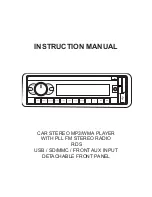
lleg_sa.a01
G281-0507-00, April 15, 1998
Hicom Office PhoneMail, Version 1, Installation and System Administration Guide
A-1
Office PhoneMail Design Checklist
A
Office PhoneMail Design Checklist
Using this design checklist as a guide, consult with the customer and complete Appendix B,
“Office PhoneMail System Planner”
. Check off each step as it is completed. Default settings
are in printed parenthesis whenever applicable. When the default setting is acceptable for any
parameter, circle the default value.
❒
Determine that Electrical Power is Available
For additional information, refer to Figure 5-1 on page 5-3.
❒
Determine the Office PhoneMail Mounting Location
For additional information, refer Section 5.2, “Selecting a Mounting Location”, on page 5-2.
❒
Determine if an optional Office PhoneMail Card is needed.
For additional information, refer to Chapter 9, “Default System Settings”.
❒
Indicate the Office PhoneMail Extensions and Access Number
For additional information, refer to the Section 5.4, “Connecting Office PhoneMail to the Hi-
com Unit”, on page 5-5.
Indicate that a 220/110 VAC outlet is available within 5 feet of the proposed mounting
location (Section B.1, “Power Requirements”, on page B-1).
Indicate that the mounting location selected meets the specifications for electrical
power, side clearance, and environmental conditions (Section B.2, “Mounting Loca-
tion”, on page B-1).
Indicate if an optional Office PhoneMail card is needed to increase ports (from 2 to
4) and therefore storage, or to add fax features (Section B.3, “Port (Storage) Expan-
sion”, on page B-1 and Section B.4, “Fax Expansion”, on page B-1).
Indicate the extensions that will be used to connect the Office PhoneMail to the Hi-
com and the voice mail access number used to provide integration support (Section
B.5, “Office PhoneMail Extensions and Access Number”, on page B-2). The Office
PhoneMail unit should not be connected to extensions used for Hicom administrative
functions (by default, 11, 17, 12, and 19).
















































